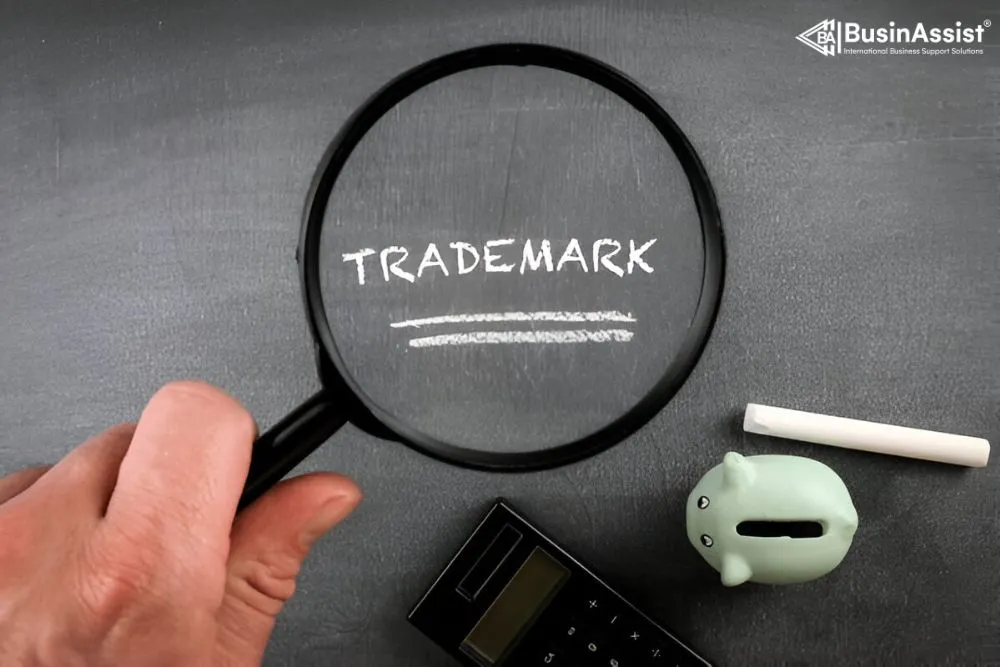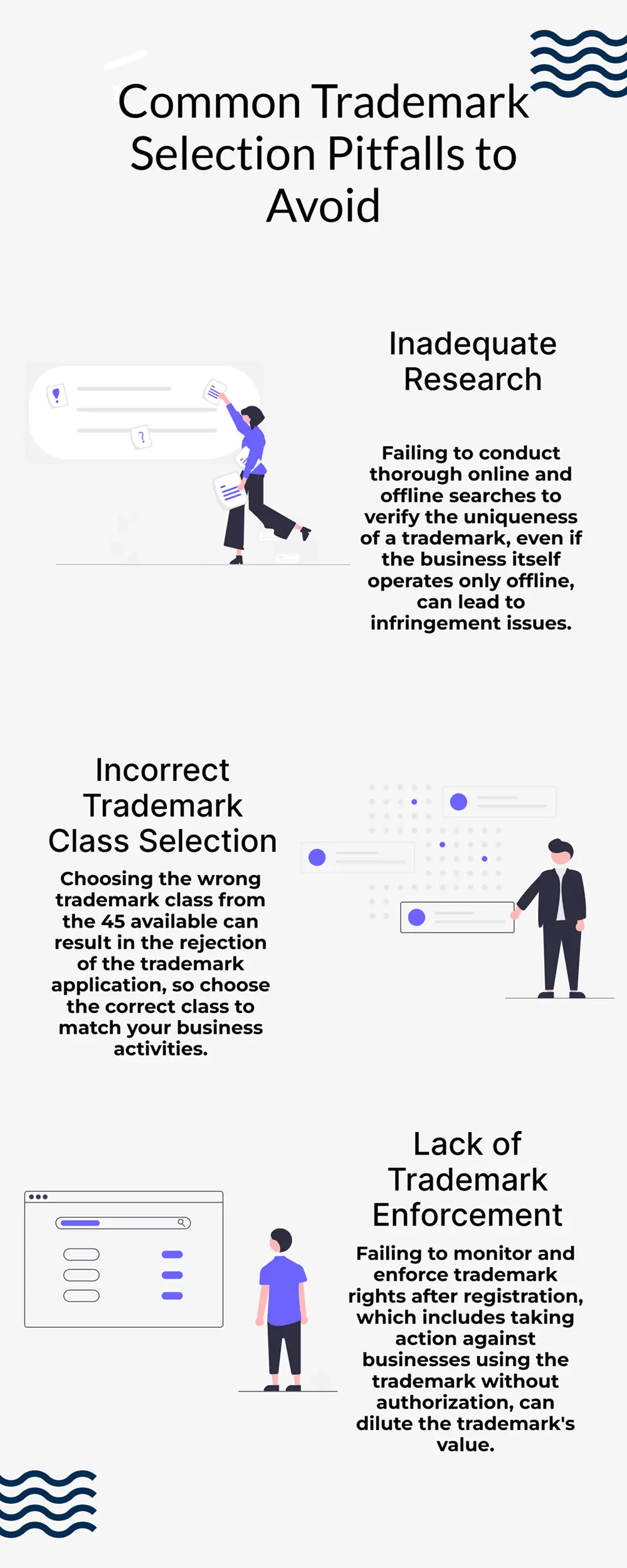Last Updated on December 2, 2025 by Joy Kyalo

Register Your Trademark in the UK from Just £50 Inc: Click Now
The market has become competitive with business owners striving to create a trustworthy environment for their customers. Registering a UK company with Companies House does not protect your business name from infringers.
Trademarking a business is a way to secure its brand, legal name, logo, voice and any distinctive symbol that sets the company apart from its competitors. This allows the business to use, grow, and protect its brand in the marketplace.
If you are a new entrepreneur in the UK, you might wonder how to trademark your business name. This article will highlight every step of the trademark registration process, why it matters, and how your business will benefit.
Key Takeaways
- Trademark legally protects your brand name and unique logo from misuse.
- It gives you strong legal rights to act against infringement and build customer trust.
- Choosing the correct trademark class ensures proper and complete brand protection.
- A trademark is renewable every 10 years and adds lasting long-term value to your business.
What is a Trademark?
A trademark is any mark or symbol that belongs to your business. The mark can be a business name, slogan, logo, phrase, word or combination. When starting a UK business, most people spend time choosing a name and a logo for their brand. While settling these elements can be time-consuming, failure to protect them can damage your business reputation, diluting its market position.
Trademark registration is the process of protecting your brand elements with the government. But my company is registered with Companies House. That is still okay; however, registering with Companies House makes your company name a legal entity, while trademark registration secures your company’s identity, which includes logo, symbol and name.
Trademark registration gives you the right to use and protect them in a court of law. This enhances trustworthiness, builds confidence and creates a positive reputation with your customers.
Why trademark your business name?

Secure brand: By trademarking your business, you get to secure your elements from any infringement. When other companies present a trademark similar to or the same as that of your business, UKIPO will reject the application.
Your innovations, whether writings, visuals, products or services, will remain secure, preventing others from imitating your unique offerings.
Legal protection: A trademark registration gives the business owner the right to take legal action against anyone who infringes their brand.
Establish a unique presence in the marketplace: A trademark makes it easier for customers to differentiate you in the marketplace. This enhances the visibility of your brand, making it memorable to your customers.
It gives your business a competitive edge, enabling your company to offer unique products and services exclusively to customers.
Build the brand’s value: A trademark registration increases your company’s value. It is considered a commercial asset that can be sold, licensed or franchised. This will increase your business’s revenue streams.
For instance, if your business deals in designing tech apps, with a trademark registration, the value of the apps will be much higher than those that are not protected.
What are trademark classes?

When registering a trademark, you must choose a class that categorises the goods and services you are offering.
For instance, if you sell musical instruments, you’d choose class 15 (Musical instruments; stands and cases adapted for musical instruments).
For services, if you offer catering services, you’d choose class 43 (Services for providing food and drink; and catering services).
If you are a fashion entrepreneur who designs and sells your clothes, you will choose two trademark classes, which include: Class 25 (clothing, footwear, headgear) and Class 35 (advertising and retail services).
If you also sell accessories such as handbags in the fashion retail shop, you’d choose class 18.
When choosing a trademark class, it is essential to understand your business activities by asking yourself which products or services you are offering. This will help you select a mark that you will use for the next 5 years. A trademark that cannot be used for the next 5 years will cost you in terms of legal actions.
To choose a class, it is essential to cover everything your business uses to sell or produce the goods and services. Now that you know how to choose a trademark class, here is how to trademark a business name.
How to trademark a business name?
Conduct trademark research:
Your trademark should be unique and distinguishable. By conducting a trademark search, you will be able to check if your proposed trademarks exist or belong to another company. You will also be able to differentiate if the mark is similar to or the same as existing trademarks.
If you submit a trademark that is the same or similar to existing ones, UKIPO will reject your application. This search can often be mistaken and it is always advisable to get it done by professional service providers like BusinAssist.
Choose an appropriate trademark class:
Depending on your business activities, choose a class that best describes what you sell or the services you offer. The classes are 45, 34 for goods, and 11 for services. The class will help give you exclusive rights to the trademark in your industry. If you are not aware of the classes or not sure which classes to go for, we can help you select the right class for your Trademark registration.
Pro Tip: Secure Your Trademark Faster
Always get professional help when filing a trademark. A small mistake in choosing the right class or missing details in the application can cause rejection, costing you both time and money. Services like BusinAssist ensure your application is accurate, increasing your chances of quick approval.
Complete the application:
The application should be accurate. You should include all company details, the intended goods or services, and the trademark class. Once done, the application should be submitted online to the UKIPO.
Application review:
The UKIPO will review your application to ensure it is accurate and meets all the requirements. This is the point where the application will be rejected if the UKIPO discovers similarities with other registered trademarks. We also offer a refundable service, where if for any reason your trademark application gets rejected, you will receive half of your payment back. This option is not available, if you go directly to UKIPO.
Publication and Opposition:
Once the application is approved, it will be published in the official IPO journal for two months to allow third parties to object.
Registration:
If no objections are raised, the trademark will be registered, giving your business exclusive rights to use the trademark.
The trademark lasts for 10 years but can be renewed. Always check if other businesses use your trademark, whether online or offline. If you find someone using your trademark, send an injunction demanding that they stop using your trademark. If they refuse, you can take legal action. This will ensure maintaining a positive reputation for your business and brand.
What are the common mistakes to look out for when choosing a trademark?
Not researching thoroughly: Even with innovative technology, some businesses do not operate online. While conducting market research, do a thorough online and offline search to ensure your trademark is unique.
Pick the wrong trademark class: Your trademark application may be rejected if the class chosen is not accurate. In the 45 trademark classes, you can find a class that identifies with your business activities.
Not enforcing trademark rights: Once the trademark is registered, you should constantly monitor it to ensure no business is using your trademark. If a business uses your trademark, you should write to them to desist from using the mark or take legal action when they refuse to stop using the mark.

How to trademark a business name is quite easy and essential to protect your brand. It gives you the right to use the trademark and take legal action against infringements.
Registering a trademark can be a complex process, and that’s why BusinAssist is here to help. Our trademark registration services ensure business owners have peace of mind. Our online services are seamless; all you have to do is fill out your business details, pay the fees, and we will do the rest.
Protect your brand today with BusinAssist’s trademark registration by contacting us at info@businassist.com.
FAQs
Q: How expensive is it to trademark a name?
Ans: Trademarking a business name costs £170 for online applications. The price is only for one class of goods or services. For every additional class, it will cost £50. Application via paper will cost £200 for the first class.
Q: Should I trademark my business name in the UK?
Ans: You should trademark your business name in the UK since company registration does not fully secure it. Trademark registration protects your brand and prevents others from using it.
Q: How long do trademarks last?
Ans: A trademark lasts for as long as 10 years but can be renewed for another 10 years.
Q: How to know if something is trademarked?
Ans: To know if something is trademarked, search for it by its name, phrase, or image.
Q: Can you trademark a phrase?
Ans: Yes, you can trademark a phrase. However, the phrase must be distinctive and not descriptive of the goods and services it relates to. For instance, if you sell cloves, the phrase can’t be ‘Best Cloves’.
Q: Can I register a trademark online?
Ans: Yes, you can register a trademark online. The Intellectual Property Office (IPO) provides an online service for filing applications. Service providers like BusinAssist also offer an online application for trademark registration.
Read Also:
- New Identity Verification Rules from Companies House: A Guide for All Directors & PSCs
- Should I Trademark My Business Name UK? What You Need to Know
- Do I Need a Registered Business to Sell on Etsy? A Simple Guide for Beginners
- Someone Has Registered a Company at My Address in the UK – Understanding Your Rights
- Understanding Your Rights: What to Do If Your Employer Doesn’t Issue a P45
- Can HMRC Access Your Bank Account? What Every Taxpayer Should Know
- Easy Businesses to Start in the UK in 2026: Profitable Ideas for Aspiring Entrepreneurs

Joy is a content writer at BusinAssist with 6+ years of experience in content marketing and social media strategy. She specialises in company formation and virtual operations, guiding entrepreneurs through global markets with clarity, drawing on her marketing and PR background. Business Assist with BusinAssist – your business success partner.